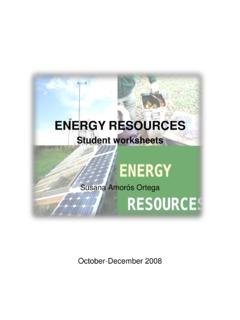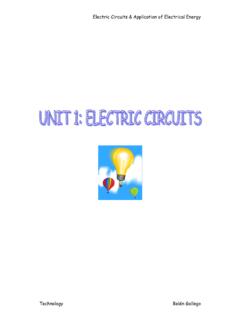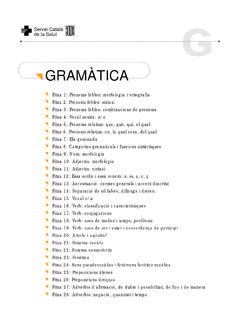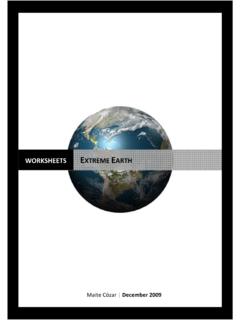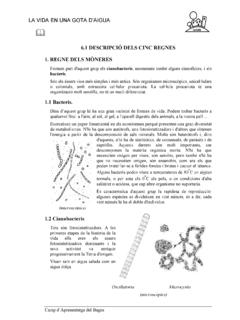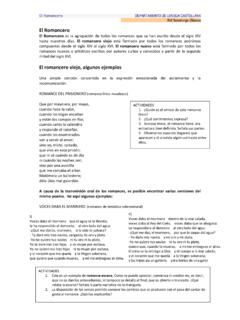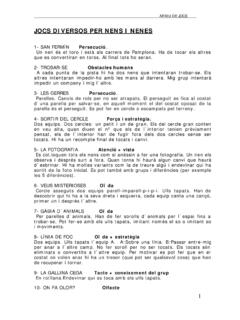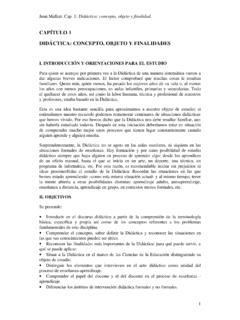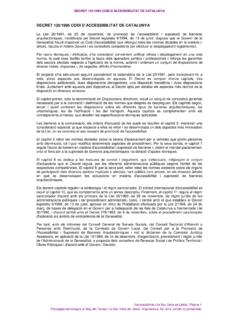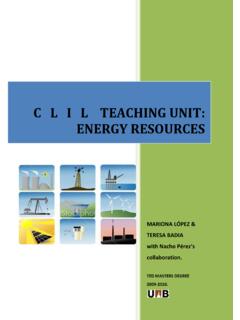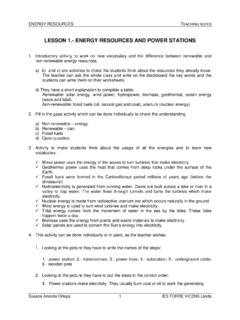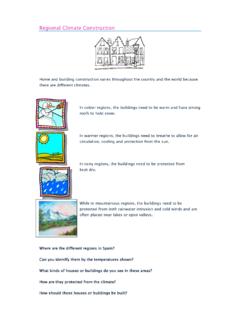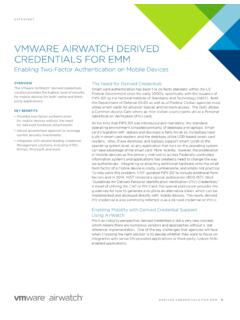Transcription of ENERGY RESOURCES - XTEC
1 ENERGY RESOURCES . Teaching notes Susana Amor s Ortega October-December 2008. ENERGY RESOURCES TEACHING NOTES. LESSON ENERGY RESOURCES AND POWER STATIONS. 1. Introductory activity to work on new vocabulary and the difference between renewable and non-renewable ENERGY RESOURCES . a) b) and c) are activities to make the students think about the RESOURCES they already know. The teacher can ask the whole class and write on the blackboard the key words and the students can write them on their worksheets. d) They have a short explanation to complete a table: Renewable: solar ENERGY , wind power, hydropower, biomass, geothermal, ocean ENERGY (wave and tidal).
2 Non-renewable: fossil fuels (oil, natural gas and coal), uranium (nuclear ENERGY ). 2. Fill in the gaps activity which can be done individually to check the understanding. a) Non-renewable ENERGY . b) Renewable can. c) Fossil fuels. d) Open question. 3. Activity to make students think about the usage of all the energies and to learn new vocabulary. Wave power uses the ENERGY of the waves to turn turbines that make electricity. Geothermal power uses the heat that comes from deep rocks under the surface of the Earth.
3 Fossil fuels were formed in the Carboniferous period millions of years ago (before the dinosaurs!). Hydroelectricity is generated from running water. Dams are built across a lake or river in a valley to trap water. The water flows through tunnels and turns the turbines which make electricity. Nuclear ENERGY is made from radioactive uranium ore which occurs naturally in the ground. Wind ENERGY is used to turn wind turbines and make electricity. Tidal ENERGY comes from the movement of water in the sea by the tides.
4 These tides happen twice a day. Biomass uses the ENERGY from plants and waste materials to make electricity. Solar panels are used to convert the Sun s ENERGY into electricity. 4. This activity can be done individually or in pairs, as the teacher wishes. 1. Looking at the picture they have to write the names of the steps: power station; transformers; power lines; substation; underground cable;. wooden pole 2. Looking at the picture they have to put the steps in the correct order: 1. Power stations make electricity.
5 They usually burn coal or oil to work the generating Susana Amor s Ortega 1 IES TORRE VICENS Lleida ENERGY RESOURCES TEACHING NOTES. machinery. 2. Transformers change the voltage of the electricity up to 400,000 Volts so it can travel long distances. 3. The electricity is carried along thick metal cables called power lines. Some of them are carried overhead on pylons. 4. In towns and cities there are more transformers in substations. These change the electricity down to 11,000 Volts. 5. Small local substations reduce the voltage to 230 Volts for houses, schools and businesses.
6 In towns, most cables are underground. 6. In some areas, cables are carried to buildings on wooden poles. 3. They have to write the process using the connectors and explain it to the partner. 4. Before doing this activity the teacher has to make sure that students already know what a flow chart is and how to draw it. If they don t know, the teacher explains it in an easy way for them to understand as an useful tool to describe a process consisting of different steps in an easy way, by writing the key words inside boxes connected by lines and arrows.
7 Different flow diagrams are possible, but one solution could be: power station electricity transformer power lines substation home wooden pole underground cable 5. Talking activity in pairs to remember the route of electricity from power stations to home by asking questions and answering them. Susana Amor s Ortega 2 IES TORRE VICENS Lleida ENERGY RESOURCES TEACHING NOTES. LESSON FOSSIL FUELS: COAL, OIL AND NATURAL GAS. This activity is done with the PowerPoint presentation Each slide has different activities to be done by students, the teacher doesn t explain the theory.
8 He/she will ask the questions and let students think individually and do the activities in their worksheets; once they ve finished they ll discuss the results. 1. Put the pictures in the correct order: B, C, A. 2. Match each picture with the suitable text: B-F, C-D, A-E. 3. Explain the process of how coal was formed. You have a possible answer in slide 5. 4. Make sentences with the information in the table. It s a revision activity. Oil was formed from sea plants and animals Coal was formed from plants Coal was formed in swamps Oil was formed in oceans Coal was formed 100 million years ago Oil was formed 50-100 million years ago 5.
9 They look at the diagram and try to understand it. Students have to put the steps in the correct order and write the process by using connectors. To correct the activity, click on the picture and you will visit the UK website and see a flash animation. Crude oil is delivered to the power station The oil is burned to heat water, producing steam The steam pushes the turbines, forcing them to spin very fast The turbines turn the generators, which create electricity The electricity flows into the grid 6. They have to explain the electricity production in a coal-fired power station.
10 The diagram with key words will help them. There is a link to a video from YouTube; it s worth watching the video twice before doing the activity. The students can write key words or phrases from the video to do the activity. 7. Draw the flow chart of the process of electricity production. You have the answer in slide 10. 8. The teacher reads the statements and the students have to decide in groups of 2 which of them are advantages and which are disadvantages and explain why. 9. Talking activity with all the students.
